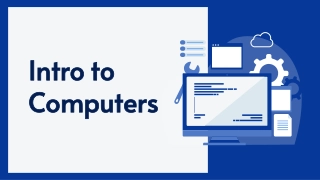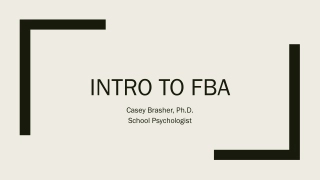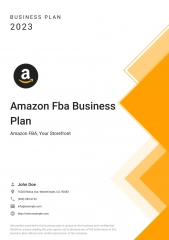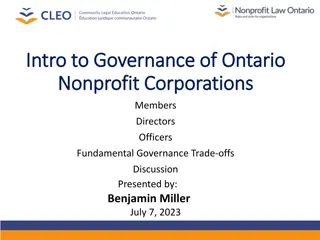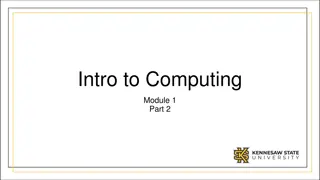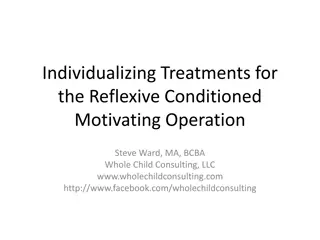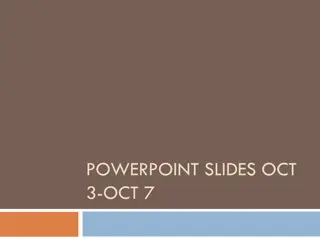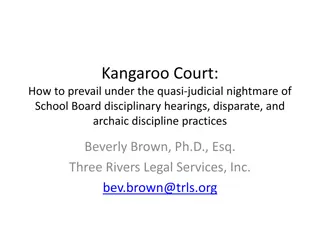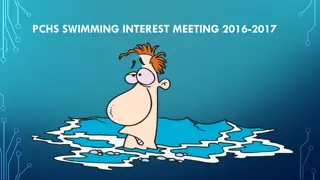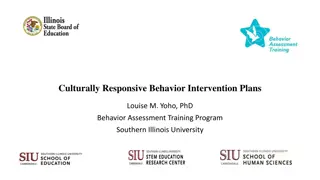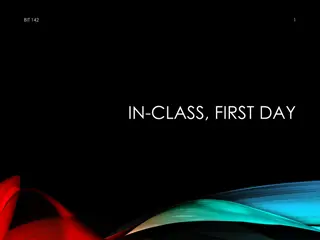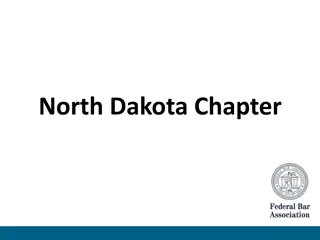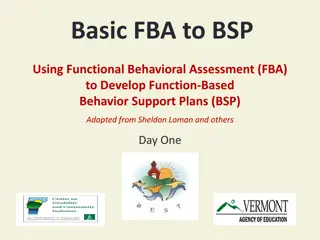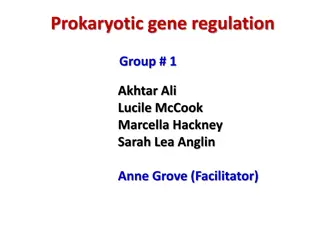INTRO TO FBA
Explore the foundational principles of Applied Behavior Analysis (ABA) through the lens of behaviorism, beginning with B.F. Skinner's theories on observable behavior. Learn about positive reinforcement, negative reinforcement, positive punishment, and negative punishment, and how these concepts shape behavior modification. Delve into ABA's focus on environmental influences, consequences, and categorization of behaviors based on access to attention, tangibles, escape, and sensory stimuli.
Download Presentation

Please find below an Image/Link to download the presentation.
The content on the website is provided AS IS for your information and personal use only. It may not be sold, licensed, or shared on other websites without obtaining consent from the author.If you encounter any issues during the download, it is possible that the publisher has removed the file from their server.
You are allowed to download the files provided on this website for personal or commercial use, subject to the condition that they are used lawfully. All files are the property of their respective owners.
The content on the website is provided AS IS for your information and personal use only. It may not be sold, licensed, or shared on other websites without obtaining consent from the author.
E N D
Presentation Transcript
INTRO TO FBA Casey Brasher, Ph.D. School Psychologist
A Little History B.F. Skinner (1904 B.F. Skinner (1904- -1990) Focus is on observable and measurable aspects of human behavior. Stimulus-response associations Rewards and punishments Beliefs Human behavior is predictable All behavior is learned Behavior can be unlearned, and replaced by new behaviors 1990)
Behaviorism Desired responses must be rewarded rewarded response Positive Reinforcement Positive Reinforcement- Something is added to increase behavior. Ex: Smile and compliment student on good performance. increase desired Negative Reinforcement Negative Reinforcement- Something is removed to increase behavior. Ex: Give a free homework pass for turning in all assignments. increase desired Positive Punishment Positive Punishment- Something is added to decrease behavior. Ex: Give student detention for failing to follow the class rules. decrease undesired Negative Punishment Negative Punishment- Something is removed to decrease behavior. Ex: Make student miss their time in recess for not following the class rules. decrease undesired
Applied Behavior Analysis What are the Principles of Applied Behavior Analysis (ABA)? What are the Principles of Applied Behavior Analysis (ABA)? Behaviors are affected by their environment. Behaviors can be strengthened or weakened by its consequences. Behavior changes are more effective with positive instead of negative consequences.
Applied Behavior Analysis Broadly speaking, behaviors can be sorted into the following four categories: Access to attention: Access to attention: Behavior is rewarded with attention by adults or peers. For example, a student might start shouting during a lesson with the hopes of being noticed by their classmates. Access to tangibles: Access to tangibles: Behavior is rewarded with a desired item or preferred activity. One classic scenario is a child who cries and whines for candy in the checkout aisle. The parent acquiesces, so the child learns that this behavior is effective.
Applied Behavior Analysis Access to escape: Access to escape: Behavior is rewarded with the removal of a demand or aversive. Typically, people are trying to escape boring tasks, reprimands, physical demands and non- preferred activities, people or spaces. Sensory: Sensory: Behavior is automatically reinforced with a pleasant nervous system response or sensation. Cracking knuckles, clapping hands, bouncing knees and fidgeting are everyday examples of sensory-seeking behavior.
Who is required to have a FBA and formal behavior intervention plan? Any student who has been removed from the educational setting through ISS, OSS, expulsion and had a FBA due to manifestation Students with chronic behavior that removes them from the LRE, even to a sped setting should be considered for a BIP Not necessary for: Students who have a behavior deficit that can be addressed through goals/objectives/accommodations AND the behavior is not harmful or dangerous
Tier III Interventions Specialized Individualized Systems for Students with High-Risk Behavior and Academic Difficulties Multi Tiered Instruction Positive Behavior Interventions and Support FBA Tier II Interventions Specialized Group Systems for Students who are at-risk for behavior and academic difficulties Tier I Interventions School-/Classroom- Wide Systems and Instruction for All Students, Staff, & Settings
Understanding Chronic Misbehavior If a student repeatedly engages in a problem behavior, he/she is most likely doing it for a reason, because it is paying off for the student The behavior is functional or serves a purpose Behavior is a form of communication, unfortunately some students learn that problem behavior is the best way for them to get their needs met
So, It Is Important To So, It Is Important To Determine the REAL function of the behavior and the REAL message being communicated.
So, its a process Collect Data Collect Data Analyze Data Analyze Data Identify Identify Function Function Develop Develop Hypothesis Hypothesis Develop Hypothesis
How do we collect data? Indirect Interviews only (teacher, parent, student) Direct without environmental manipulation Interviews Observations Structural analysis Interviews Structured observations Systematically altering antecedents Experimental analysis (functional analysis) Setting up controlled conditions
Indirect assessments rely on reports about a student s behavior rather than direct observation of the behavior. Many interviews and rating scales exist Should focus on: The problem behavior(s) Context/routines where problem behavior is most and least likely Specific events (discriminative stimuli) that occasion the problem behavior(s) Specific consequences that appear reinforcing.
Example Interview FACTS Interview (Functional Assessment Checklist for Teachers and Staff) Designed to be conducted with the teacher(s) and staff most familiar with the individual student and the problem behaviors that are occurring 20-45 minutes depending on complexity of problem behavior Should be conducted prior to behavior support plan meeting
Part A Student strengths Problem behavior(s) Routines analysis Target routine(s)
Description of Problem Behavior Targeted routine Problem behavior detail
Data Collection How often should we collect data? When implementing a new program or teaching a new skill, data should be collected every day or every teaching session over 6 data points, or 2 weeks. Once progress is seen, data collection twice a week is sufficient. Most common frequency is once per week.
Data Collection Event Recording Interval Recording Time Sampling Duration Recording Latency Recording
Summary of Data Collection Systems Is the target behavior numerical or temporal? If it is numerical Is it discrete or continuous? Is it expected to occur at high, moderate, or low frequency? Can teacher collect or third party? If it is temporal Time before initiation of response or time elapsed during performance of the response
Data Analysis Data analysis should occur daily and weekly. A review of the day s data should include confirmation of target behavior, validity of operational definition, occurrences of new inappropriate behaviors, consistent patterns/relationships with antecedents or consequences, emerging functions.
Direct Observation Direct Observation Direct observation is often done to validate information obtained through interviews. The student is observed in the context/routine where the problem behavior is most likely to occur. Direct observation focuses on identifying the specific antecedents and consequences that appear to control the problem behavior.
Conduct ABC Observation(s) Observe student during setting/routine where problem behavior is most likely to occur Focus on: A Antecedents (what triggers problem behavior?) B Behavior (what does the problem behavior look like? How often does it occur?) C Consequences (what happens directly after problem behavior occurs? How do adults and other students respond?) Observation forms: Generic ABC observation forms
Guiding questions Consequence category Follow-up questions
Critical Features 1. 1. Clear Clear and measurable (problem) behaviors 2. Antecedent events (triggers problem behavior is most likely to occur 3. What is the consequence that contributes most to maintaining the problem behavior in that routine (i.e., the function function of the behavior) 4. Summary statement of findings 5. 5. Behavior support plan developed based on Behavior support plan developed based on summary statement (FBA findings) summary statement (FBA findings) measurable definition of target triggers) that predict when the
Target Behavior Operationally defining behavior: Behavior must be observable observable and measurable measurable Unambiguous and objective Tells exactly what the student says or does Can you see the behavior? Can you count the behavior? Observable beginning and end Independent observers agree
Operationally Defining Behavior Talking out Off-task Any vocalizations that are not initiated by the teacher, are out of turn, or are unrelated to academic content Eyes oriented away from teacher/instructional materials, using materials inappropriately, and/or fails to comply with teacher requests within 5-sec of the request
Pair Pair with a partner. Think Think and write a description of a tantrum on a piece of paper. Determine exactly what a tantrum looks like. Share Share your description with the group. Operational Definitions- A Test Can you count the behavior? Will a stranger know what to look for? Can you break the definition into smaller components that are more specific and observable?
Understanding Antecedents What typically happens just before problem What typically happens just before problem behavior to trigger it? behavior to trigger it? If this antecedent were in place 10 times, how often would it result in problem behavior? Does the problem behavior ever happen when the antecedent is absent/opposite of antecedent? If you wanted to set up the student to engage in the problem behavior, what would you do?
Understanding Antecedents What specific activity? Which specific peers? What tasks? The more specifically you can narrow, the better you can prevent the problem behavior from occurring. What specific features of the antecedent are important? Independent math worksheets Large group reading Unstructured activities when sitting near preferred peers Examples:
Understanding Consequences and Function What happens immediately after the behavior? How do peers respond? How do the adults respond? What are the consequences for the student? What activities change or stop? How many times out of 10 do each of these responses occur following the problem behavior? Examples: Sent to office Behavior is ignored Peers laugh at student Student is verbally corrected
Understanding Consequences and Function Narrowing down potential consequences: Would the behavior still happen if that consequence didn t exist? Peer attention: If no peers were around? Adult attention: If no adults were around? Escape: If the task were easier? Of the last 10 times you saw this behavior, how often did that consequence occur? Consequence vs. Function The consequence is the event that occurs immediately after problem behavior Function Function is what the student is getting out of behavior getting out of the
Understanding Consequences and Function Function Function The general general outcome of a behavior, the purpose What is the student gaining/avoiding? peer attention, adult attention, task/work, tangible, preferred activity/non-preferred activity, sensory stimulation Non-examples: Retaliation, intimidation, fear, control
What is a Setting Event? Situations or factors unique to the individual: Make problem behavior more intense or more likely to occur by changing the value of reinforcers Examples include illness, fatigue, hunger, social conflict In many cases, there will not be a relevant setting event.
Summary Statement 4 1 2 3 Skips breakfast Asked to complete an academic task Lays on the Escape task floor and kicks (1) When asked to complete an academic task, Jimmy (2) lays on the floor and kicks at his teachers in order to (3) escape the task. This is more likely to occur on days when Jimmy does not eat breakfast.
Once you establish the function of a behavior, you Once you establish the function of a behavior, you need to determine how the ADULT might be need to determine how the ADULT might be contributing to the problem. contributing to the problem. Just how does she Just how does she think I contribute to think I contribute to THEIR behavior? THEIR behavior? Do you mean that I Do you mean that I must change so the must change so the student will change? student will change?
The FBA is only useful if it is used to develop a Behavior Plan (BIP/BSP) The BIP should match the function or purpose the behavior serves. The goal is that the FBA process will make the problem behavior irrelevant (antecedent manipulation/prevention), inefficient (teacher more effective alternative behaviors), or ineffective (alter the consequences). Terms to know: Shaping, Cueing, Prompting, Fading, Alternative (replacement) Behaviors
Example Replacement Behaviors Students runs out of the classrooms and/or building Student requests time in safe spot through the use of a signal Student bites adults, self, or peers Student uses a safe necklace, pencil topper, or hard candy to chew when needed Student yells and throws items at the teacher Student requests time to talk with the teacher or moves to a seat near the teacher Student steals from the cafeteria Student assists in the cafeteria to earn a small snack or money in their lunch account
Behavior Strategies Based on Function Setting Event Neutralize/eliminate effect of setting event Antecedent Strategy Prevent problem behavior from occurring Behavior Teaching Teach alternative and desired behaviors Consequence Strategy Increase desired behaviors & decrease problem behaviors
Remember, its a process Even with strong data collection, collaboration, and thoughtful planning the BIP may not be entirely effective the first time Remember, it is a plan for improvement, not a magic wand, give it some time (3-4 weeks unless at a crisis level during that time) There may be more the student is telling us that we just haven t heard clearly yet If at first you don t succeed, try again. This is about a student s life, not that moment
Ooops. Sometimes we reinforce the incorrect behavior: It is significantly easier to get attention for doing something wrong than doing something right. The undesired behavior evokes an emotional response that creates reinforcement for the child. We are human, we make mistakes, get tired, and balance a lot at once. No one is perfect. No plan is perfect. No day is perfect.

 undefined
undefined


